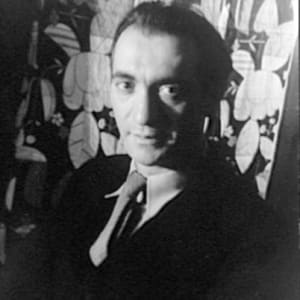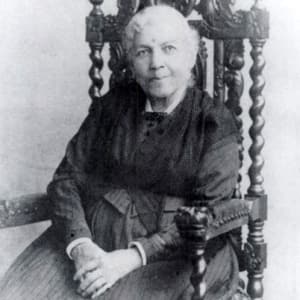
Nickolas Muray
Photographer Nickolas Muray was famous for his portraits of Hollywood beauties, his fabulous fencing skills and his romance with artist Frida Kahlo.
Synopsis
Born in Szeged, Hungary, on February 15, 1892, Nickolas Muray moved to the United States in 1913. As a photographer, he was acclaimed for his portraits of celebrities, as well as the images he created for high-end advertisements and magazine spreads. Muray was also an Olympic fencer, bringing home a bronze medal in 1932. He was romantically involved with Mexican artist Frida Kahlo for many years.
Early Life
Born in Szeged, Hungary, on February 15, 1892, famed photographer Nickolas Muray is known for his commercial images and for his numerous portraits of some of the 20th century's best-known performers, including Greta Garbo, Charlie Chaplin and Fred Astaire. Muray was also a championship-winning fencer who played on the U.S. team at the 1928 and 1932 Olympic Games. The son of a postal worker, he studied sculpture for a time before leaving school to go to work as an engraver.
After spending a few years in Germany, Muray moved to the United States in 1913, knowing about 50 words of English and carrying an International Engravers Certificate. He settled in New York City, finding work as a color separator and engraver for a Brooklyn company. In his own time, Muray began to study photography. Using a shared studio in New York’s Greenwich Village neighborhood, he started to build his own photography business. Landing his first big break, Muray sold a portrait of actress Florence Reed to Harper’s Bazaar in 1920.
Celebrity Photographer
Nearly overnight, Muray became an in-demand celebrity photographer, handling assignments from many leading publications. In 1926, Vanity Fair sent him to Europe to photograph the likes of artist Claude Monet and writer George Bernard Shaw. Muray also captured many other famous faces for other projects, ranging from dancer and choreographer Martha Graham to Presidents Calvin Coolidge, Herbert Hoover, Franklin D. Roosevelt and Dwight D. Eisenhower.
Working with public relations manager Edward L. Bernays, he created many iconic commercial images for Bernays' clients, such as Lucky Strike cigarettes. In 1930, he was given a contract with the publishing company behind the Ladies Home Journal, which resulted in his creation of the first natural color commercial photograph to appear in a U.S. magazine the following year.
Relationship With Frida Kahlo
Around this time, Muray met Mexican artist Frida Kahlo. The two developed an on- and off-again relationship that spanned a decade. It outlasted his third marriage to Monica O’Shea, whom he married in 1930. In 1937, Monica divorced Muray on the grounds of cruelty according to a report in The New York Times.
During most of their relationship, Kahlo was married to Mexican muralist Diego Rivera who also had a number of extramarital affairs. When Kahlo divorced Rivera in 1939, Muray hoped that he would be able to marry her. Those hopes were soon dashed—she remarried Rivera the following year. Despite his disappointment, Muray remained on friendly terms with Kahlo. He took numerous portraits and photographs of Kahlo over years, some of which used the Carbro technique, a type of carbon pigment process for making color prints which he perfected.
During his career, Muray took more than 10,000 portraits and did countless commercial photography projects. He worked on advertisements for such companies as General Electric, Sara Lee, American Cyanamid and Kraft.
Fencing Prowess
In addition to photography, Muray excelled at the sport of fencing. Legend has it that he and artist Jacques La Salle were supposed to fight a duel with rapiers in 1920. On the day of the duel, the two met at the same site where Alexander Hamilton was killed by Aaron Burr in a similar challenge. In this case, however, their alternates decided against bringing the necessary weapons for the duel, and the artists settled their conflict without any violence, according to The New York Times. While that match never happened, Muray was triumphant in numerous other fencing bouts. He was the U.S. saber champion from 1927-1928. In 1928, Muray competed at the Summer Olympic Games as part of the U.S. fencing team. He made the team again for the 1932 Olympics, which brought home the bronze medal in the team competitions in foil and épée events.
For the rest of his life, Muray remained active in the sport. He died on November 2, 1965, after collapsing during a fencing match at the New York Athletic Club. He was survived by his fourth wife, Margaret Schwab Muray, and their two children, Nicholas Christopher and Mimi.
In 1988, his daughter Mimi donated some of his papers to the Archive of American Art. His work is also part of the photography collection of the George Eastman House. Today, interest in his images remains strong. His portraits of Frida Kahlo are currently being featured in a traveling exhibit. A book published in 2004, titled "I Will Never Forget You…: Frida Kahlo to Nickolas Muray" by Saloman Grimberg, details their friendship from 1931 to Kahlo's death in 1954. It also serves as a catalog to the exhibition, and is the most thorough reference book to date on Muray's life.
Muray's work has served as inspiration for many later artists, such as Irving Penn, Diane Arbus, and Annie Leibovitz. With his own unique style and innovative techniques, Muray has earned his place in the history of photography.




